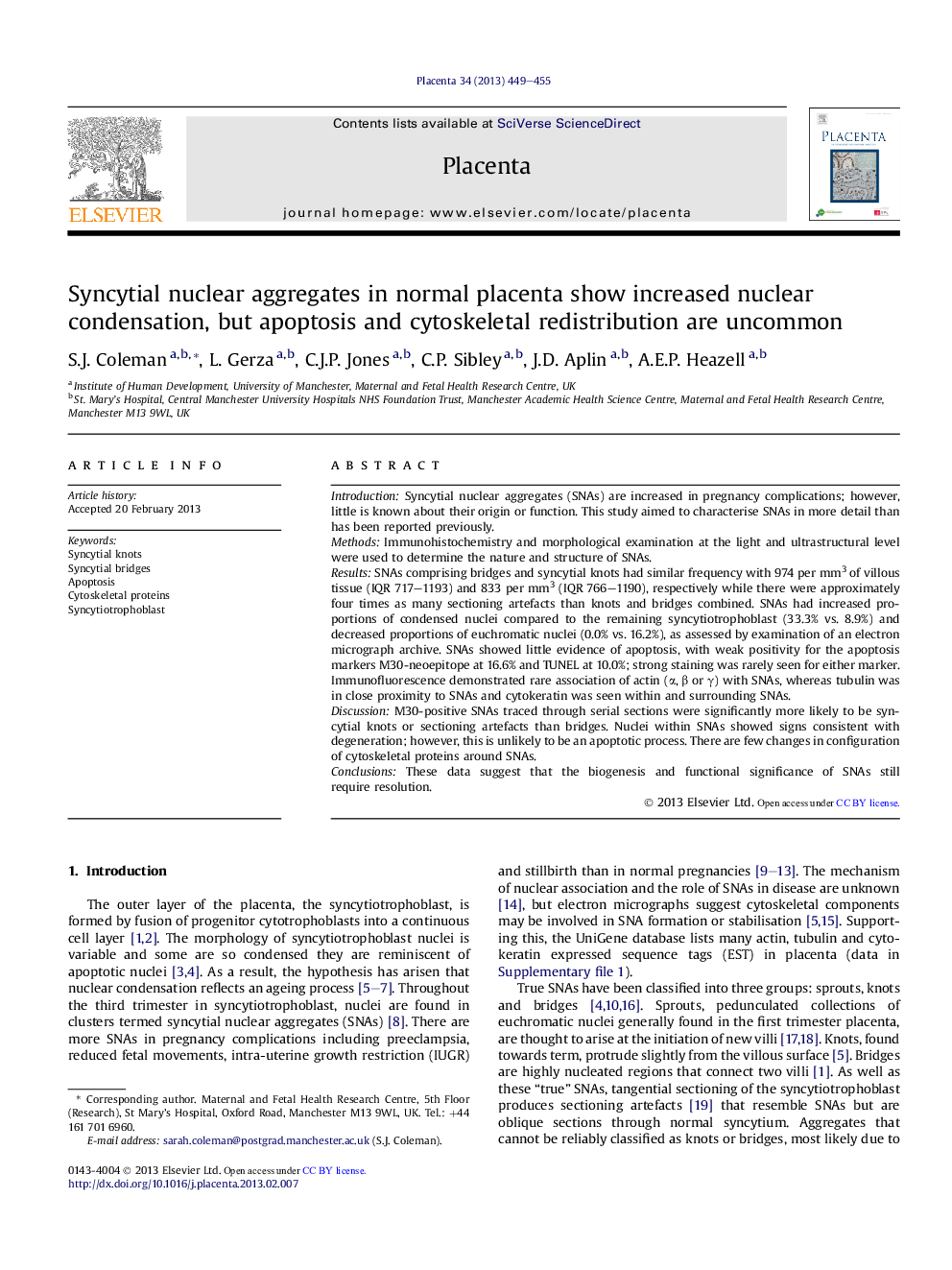| Article ID | Journal | Published Year | Pages | File Type |
|---|---|---|---|---|
| 5895572 | Placenta | 2013 | 7 Pages |
IntroductionSyncytial nuclear aggregates (SNAs) are increased in pregnancy complications; however, little is known about their origin or function. This study aimed to characterise SNAs in more detail than has been reported previously.MethodsImmunohistochemistry and morphological examination at the light and ultrastructural level were used to determine the nature and structure of SNAs.ResultsSNAs comprising bridges and syncytial knots had similar frequency with 974 per mm3 of villous tissue (IQR 717-1193) and 833 per mm3 (IQR 766-1190), respectively while there were approximately four times as many sectioning artefacts than knots and bridges combined. SNAs had increased proportions of condensed nuclei compared to the remaining syncytiotrophoblast (33.3% vs. 8.9%) and decreased proportions of euchromatic nuclei (0.0% vs. 16.2%), as assessed by examination of an electron micrograph archive. SNAs showed little evidence of apoptosis, with weak positivity for the apoptosis markers M30-neoepitope at 16.6% and TUNEL at 10.0%; strong staining was rarely seen for either marker. Immunofluorescence demonstrated rare association of actin (α, β or γ) with SNAs, whereas tubulin was in close proximity to SNAs and cytokeratin was seen within and surrounding SNAs.DiscussionM30-positive SNAs traced through serial sections were significantly more likely to be syncytial knots or sectioning artefacts than bridges. Nuclei within SNAs showed signs consistent with degeneration; however, this is unlikely to be an apoptotic process. There are few changes in configuration of cytoskeletal proteins around SNAs.ConclusionsThese data suggest that the biogenesis and functional significance of SNAs still require resolution.
